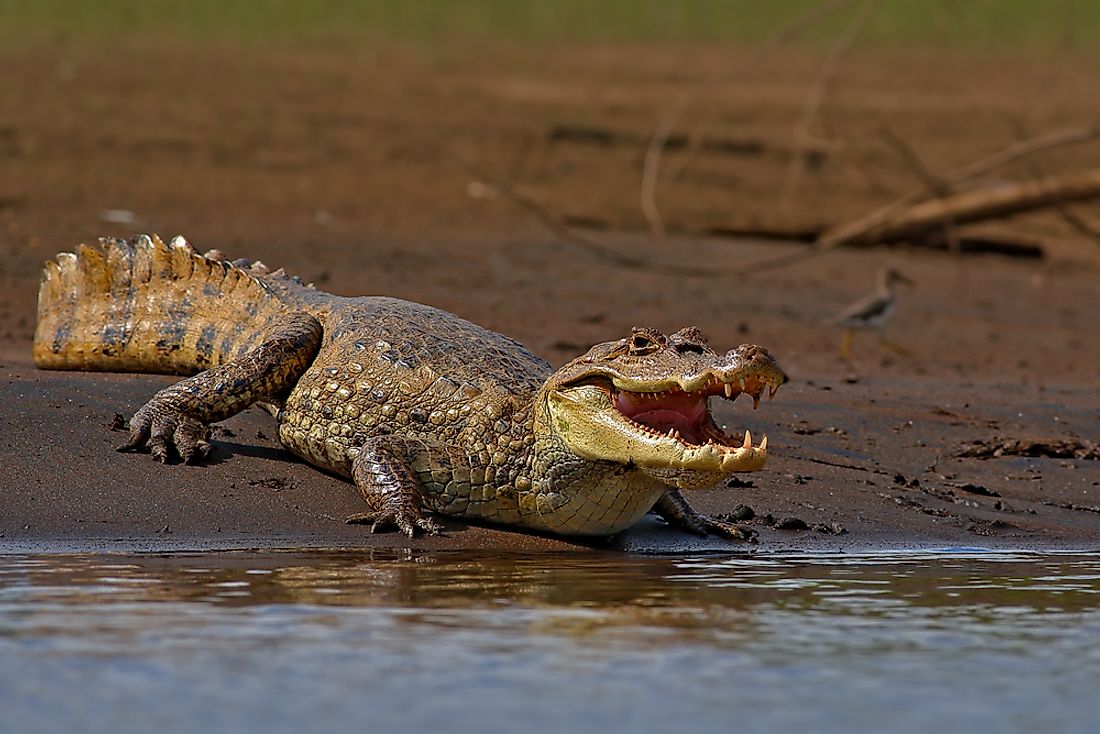Crocodile Facts - Animals of the World

Crocodiles are large social reptiles that live in Asia, Africa, Australia, and the Americas. A total of 40 species of crocodiles have been documented. Different species have different characteristics, but there are common traits such as streamlined bodies, webbed feet, teeth, and tails. Crocodiles are ancient having existed during the times of dinosaurs.
Different crocodile species have different sizes. The smallest species is the dwarf crocodile growing to lengths of around 5 feet and weighing between 40-70 pounds. The largest of them is the saltwater crocodile which can grow up to 23 feet and can weigh 2,200 pounds. Crocodiles can also replace their 80 teeth 50 times over the span of their existences (35-75 year lifespan). Contrary to popular belief, they are not closely related to other reptiles. Instead, birds and dinosaurs are the closest relatives.
Diet
Crocodiles are carnivorous and kill by ambushing prey. The reptiles lie in wait in the water and wait for animals to come close to the bank then rush out to kill with their powerful jaws. Mostly they eat amphibians, crustaceans, reptiles, mammals, fish, and birds. The size of prey hunted largely depends on the size, age, and species. Larger crocodiles hunt prey like buffalo and wildebeests while smaller species and all young crocodiles feed on fish and small marine creatures. Young ones of large species gradually kill bigger prey. During harsh times, crocodiles fight for food with others, scavenge for carrion, or eat their young.
Reproduction
Crocodiles lay eggs in nests or holes. Nesting ranges from a few weeks to months. Courtship usually involves several displays of submissions and playfulness and may be protracted with mating happening in the water.
After the eggs are laid, they incubate for 80 days. The sex depends on the surrounding temperature. 30°C (86°F) means most hatchlings are females, 31°C (88°F), produces a mixture, and above that up to 32°C (90°F), produces mostly males. For different species, higher than these temperatures may produce males or females. For all their majesty, hatchlings are extremely vulnerable and need protection.
Biology
The biology of crocodiles allows them to be top predators. Crocodiles possess like sharp senses with excellent night vision that gives them an edge over animals with poor night vision. The eyes are on top of the head allowing it to remain hidden from prey.
Crocodiles also have excellent smelling abilities that allow them to home in on prey with astonishing accuracy either on land or in water. Combined with their tympanic membranes for hearing, they are perfect trackers. The jaws also have plenty of sensory pits that enable them to detect the slightest disturbances on the surface of the water.
Other features that give it an edge include their hardened scales for protection, webbed feet, streamlined bodies, and powerful tail for motion in water and on land. Research has also shown that they possess advanced cognitive abilities that enable them to predict the behavior and pattern of prey, like their drinking times. Their teeth and powerful jaws provide excellent weapons and force to clamp down on prey and rivals until they are dead. To aid in digestion, they have extremely acidic stomachs that give them the ability to digest almost anything they eat.











